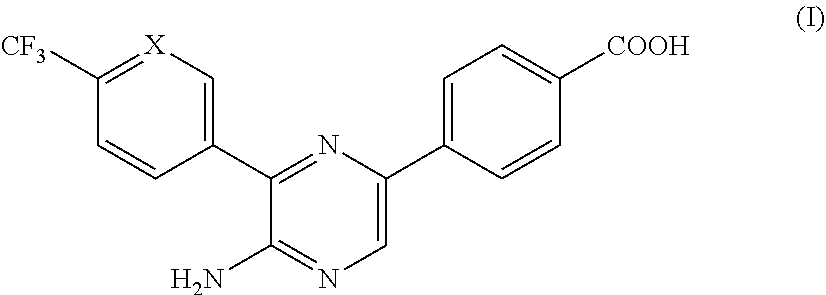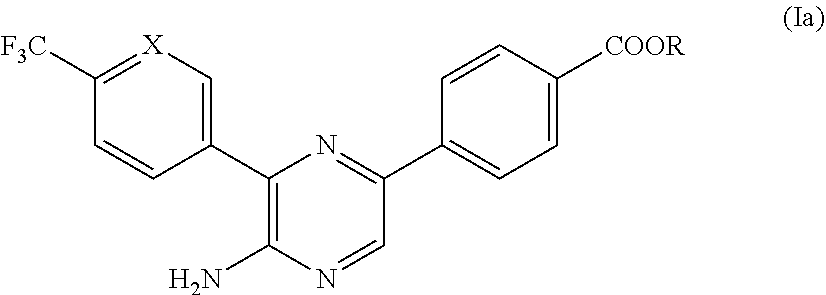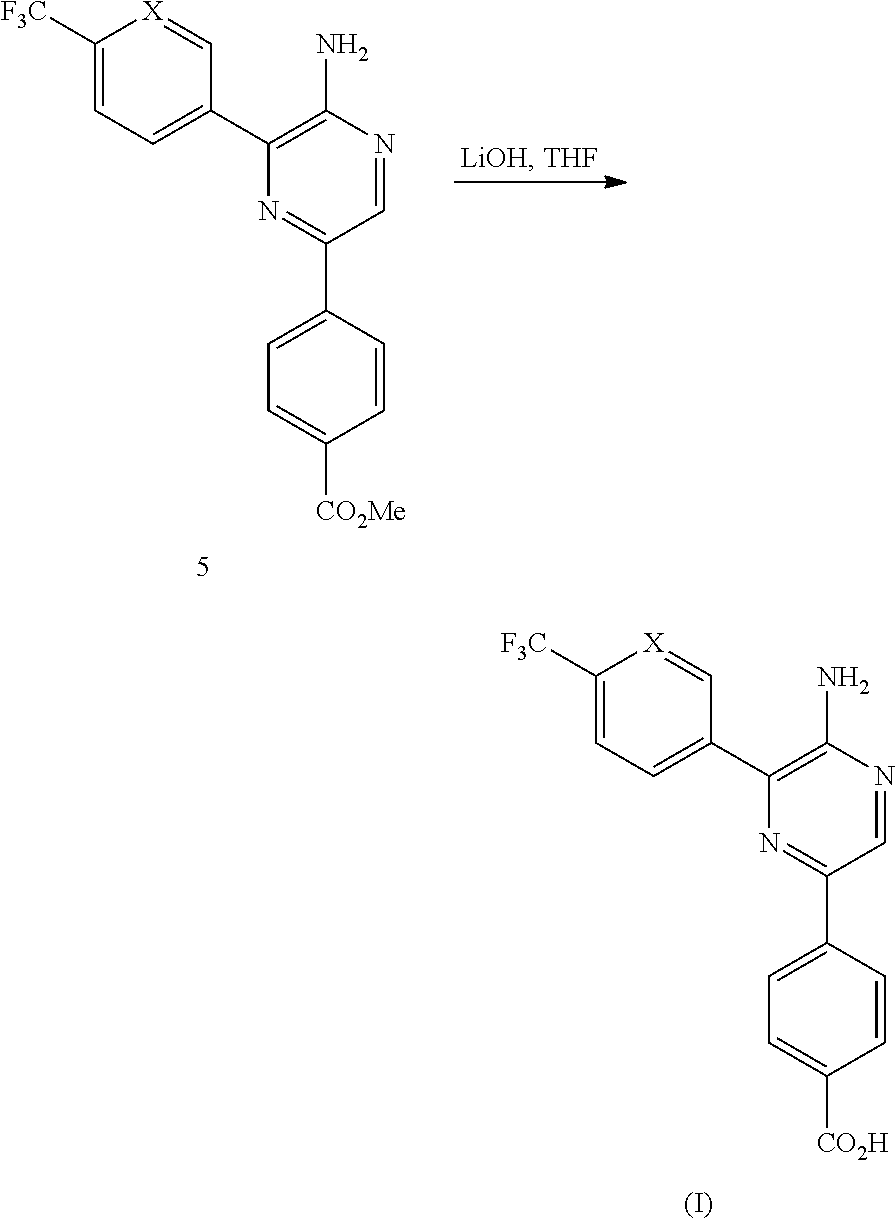Anti-malarial agents
a technology of anti-malarial agents and anti-cancer drugs, applied in the field of new drugs, can solve the problems of affecting the effectiveness of current chemotherapies, affecting the survival rate of patients, so as to improve the effect of anti-cancer effect, prolong the half-life of plasma, and improve the solubility
- Summary
- Abstract
- Description
- Claims
- Application Information
AI Technical Summary
Benefits of technology
Problems solved by technology
Method used
Image
Examples
example 1
Synthesis of Compounds According to the Invention
[0084]The aminopyrazine derivatives can be prepared from readily available starting materials using methods and procedures known from the skilled person. It will be appreciated that where typical or preferred experimental conditions (i.e. reaction temperatures, time, moles of reagents, solvents etc.) are given, other experimental conditions can also be used unless otherwise stated. Optimum reaction conditions may vary with the particular reactants or solvents used, but such conditions can be determined by the person skilled in the art, using routine optimisation procedures. The compounds of the invention are synthesized as described in the general synthetic route, Scheme 1 below wherein X is CH or N.
[0085]
4-(5-amino-6-(4-(trifluoromethyl)phenyl)pyrazin-2-yl)benzoic acid (Compound (1))
[0086]
[0087]The title Compound (1) of the invention was synthesized as described in Scheme 1 above wherein X is CH in the Step 4 boronic acid reagent, an...
example 2
Anti-Malarial Activities of Compounds According to the Invention
[0123]The ability of aminopyrazine derivatives according to the invention to kill P. falciparum parasites and / or to inhibit its proliferation is assayed through their ability to inhibit Plasmodium falciparum growth. Compounds were screened against multidrug resistant (K1) and sensitive (NF54) strains of P. falciparum in vitro as described by Vennerstrom et al. 2004, Nature, 430, 900-904.
example 3
Solubility of Compounds According to the Invention
[0124]Kinetic solubility was performed using 10 mM stock solutions of each compound in 100% DMSO. Dilutions were prepared to a theoretical concentration of 200 μM (n=2) in phosphate buffered saline (PBS) pH 6.5 (in 2% DMSO), in 0.01 M HCl pH 2 (in 2% DMSO) and in biologically relevant gastrointestinal media, fasted state simulated intestinal fluid, FaSSIF (in 2% DMSO). Calibration curves (11-220 μM) were prepared in DMSO. All dilutions were equilibrated at room temperature and mixed for 2 hours on an orbital shaker. The concentration of the test compounds was determined by HPLC using a Kinetex C18 column (2.1 mm×50 mm, 2.6 μm) at a column temperature of 35° C. An injection volume of 5 μL was used with a mobile phase flow rate of 0.6 mL / min. The mobile phase gradient method was as follows in Table 1:
[0125]
TABLE 1Time (min)% A% B0.0010000.2010001.4001001.5801001.6010003.001000
[0126]Mobile phase A: 0.1% formic acid in 5% acetonitrile / wa...
PUM
| Property | Measurement | Unit |
|---|---|---|
| flow rate | aaaaa | aaaaa |
| pH | aaaaa | aaaaa |
| pH | aaaaa | aaaaa |
Abstract
Description
Claims
Application Information
 Login to View More
Login to View More - R&D
- Intellectual Property
- Life Sciences
- Materials
- Tech Scout
- Unparalleled Data Quality
- Higher Quality Content
- 60% Fewer Hallucinations
Browse by: Latest US Patents, China's latest patents, Technical Efficacy Thesaurus, Application Domain, Technology Topic, Popular Technical Reports.
© 2025 PatSnap. All rights reserved.Legal|Privacy policy|Modern Slavery Act Transparency Statement|Sitemap|About US| Contact US: help@patsnap.com



